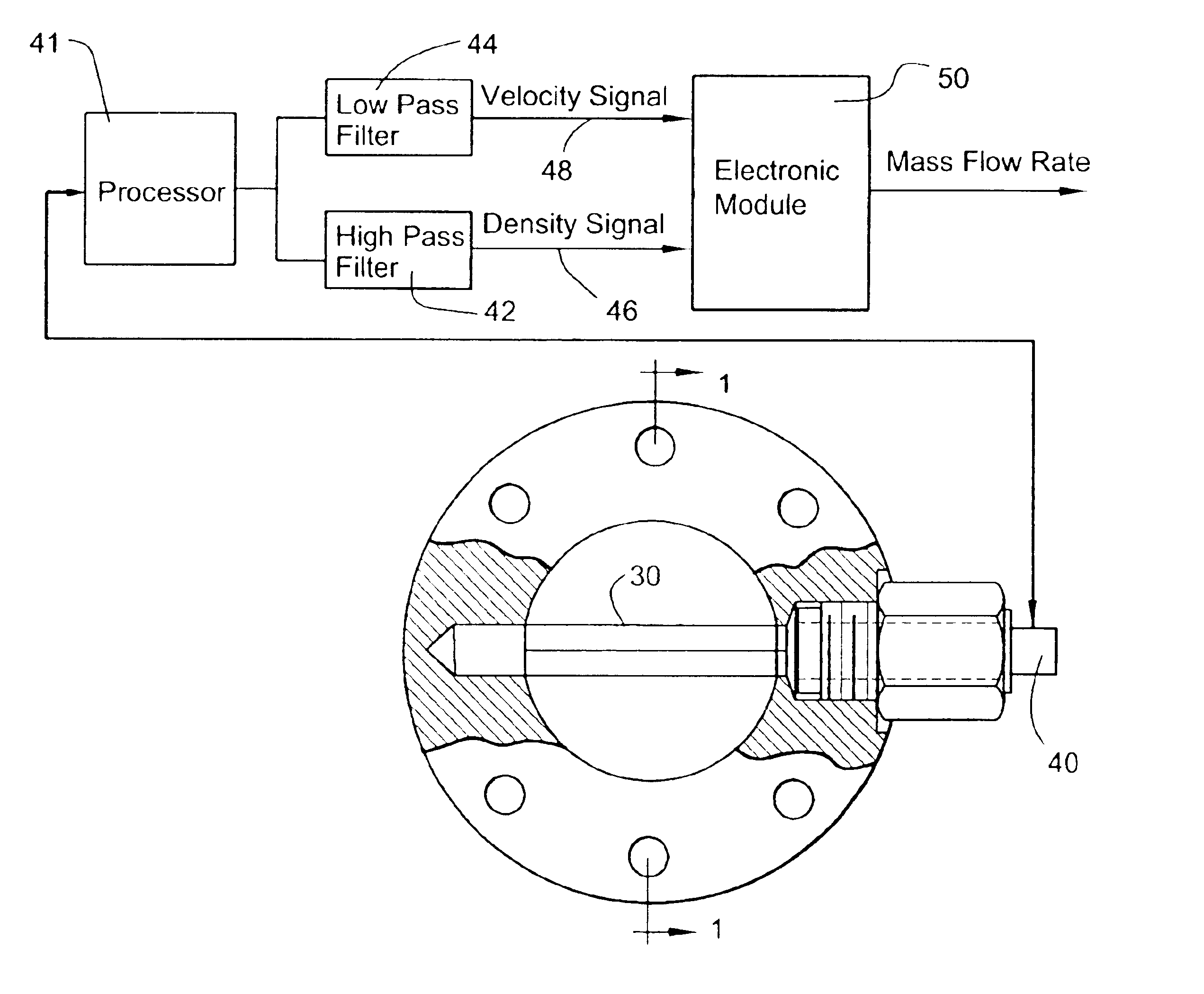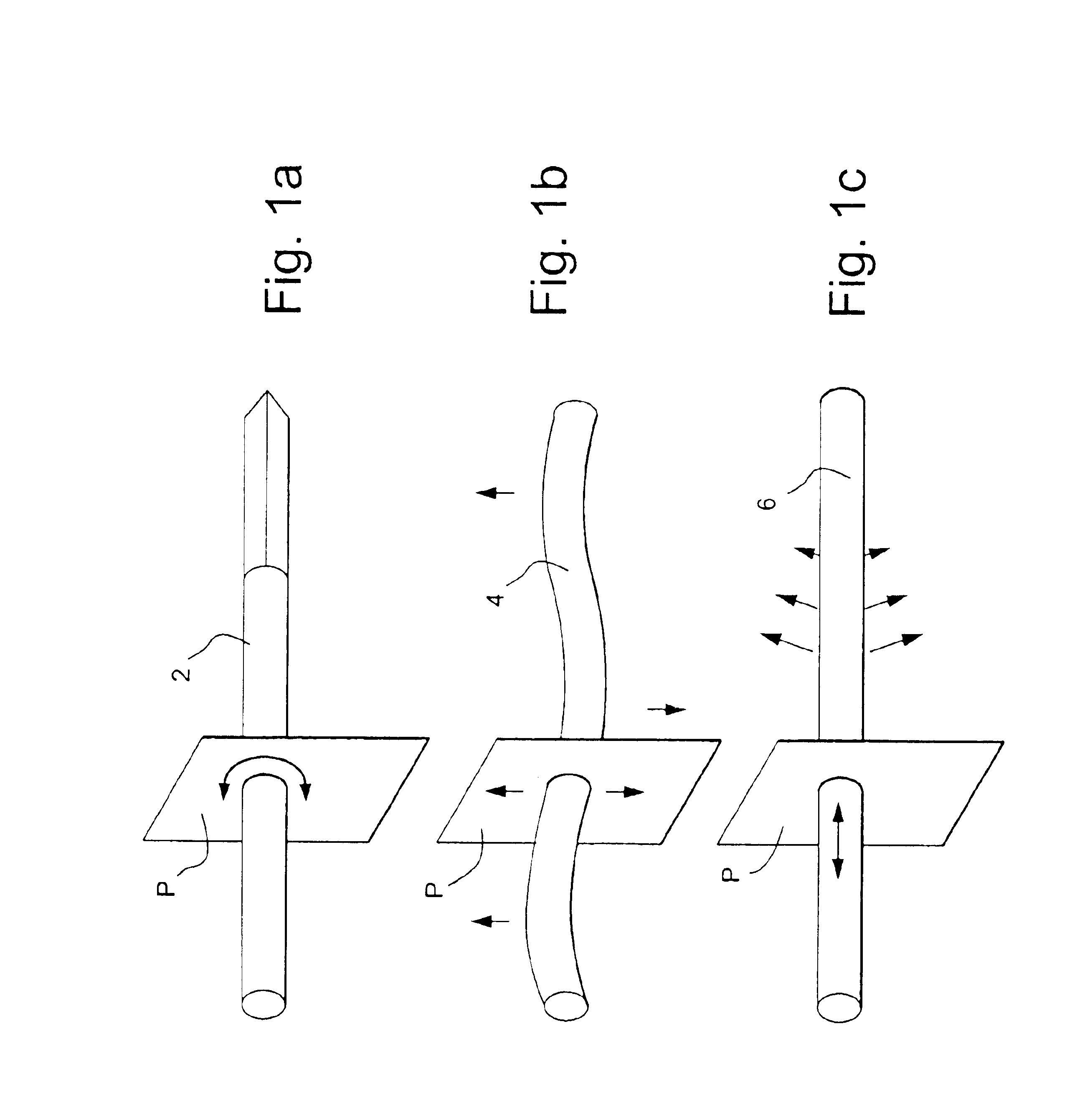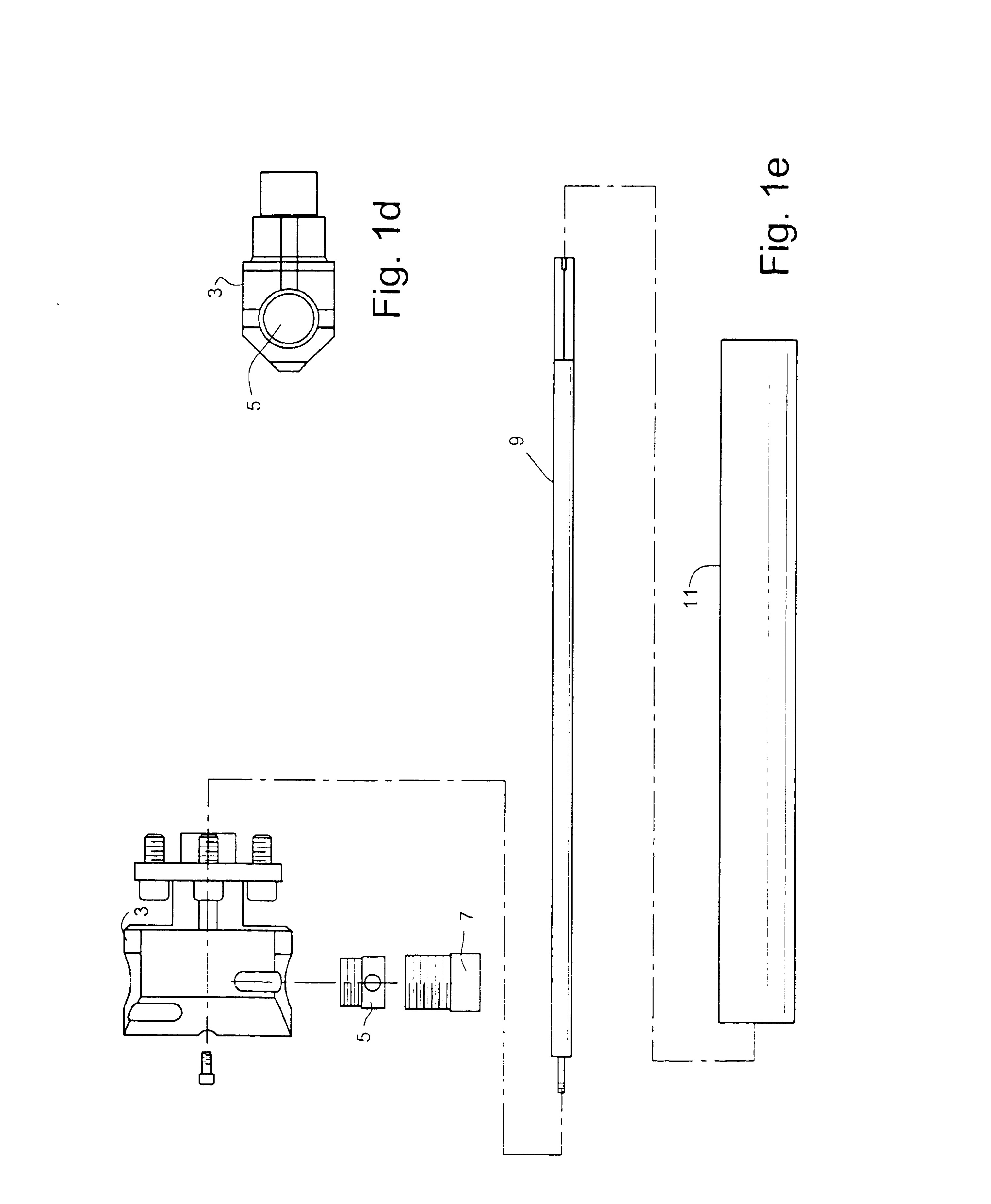Mass flow sensor and methods of determining mass flow of a fluid
a mass flow sensor and fluid technology, applied in the direction of liquid/fluent solid measurement, instruments, specific gravity measurement, etc., can solve the problems of ineffective or direct coupling of the lowest-order flexural mode, inconvenient measurement of density, and inconvenient measurement of mass flow, so as to extend the system measurement range
- Summary
- Abstract
- Description
- Claims
- Application Information
AI Technical Summary
Benefits of technology
Problems solved by technology
Method used
Image
Examples
Embodiment Construction
[0035]In FIG. 1a there is illustrated a waveguide 2 which may be excitable in a torsional mode. As illustrated, the principal motion in the waveguide is a vibratory torsional motion in a plane P perpendicular to the long axis of the waveguide. As the torsional wave in waveguide 2 passes the plane P, if it is a lowest order torsional wave, all elements in waveguide 2 that are in that plane rotate either clockwise or counterclockwise about the axis of the waveguide, much like solid body rotation, but on a microscopic scale. In FIG. 1a, a diamond shaped segment of the waveguide noted in the following description is illustrated. Torsional waves propagating along the noncircular diamond portion of the waveguide of FIG. 1a are slowed by a mass loading effect when immersed in a fluid at rest or flowing. The flow may be directed, for example, in a direction perpendicular to the long axis of the waveguide. In FIG. 1b, there is illustrated a waveguide 4 in which the lowest order flexural wave...
PUM
| Property | Measurement | Unit |
|---|---|---|
| frequency | aaaaa | aaaaa |
| frequency | aaaaa | aaaaa |
| frequency | aaaaa | aaaaa |
Abstract
Description
Claims
Application Information
 Login to View More
Login to View More - R&D
- Intellectual Property
- Life Sciences
- Materials
- Tech Scout
- Unparalleled Data Quality
- Higher Quality Content
- 60% Fewer Hallucinations
Browse by: Latest US Patents, China's latest patents, Technical Efficacy Thesaurus, Application Domain, Technology Topic, Popular Technical Reports.
© 2025 PatSnap. All rights reserved.Legal|Privacy policy|Modern Slavery Act Transparency Statement|Sitemap|About US| Contact US: help@patsnap.com



